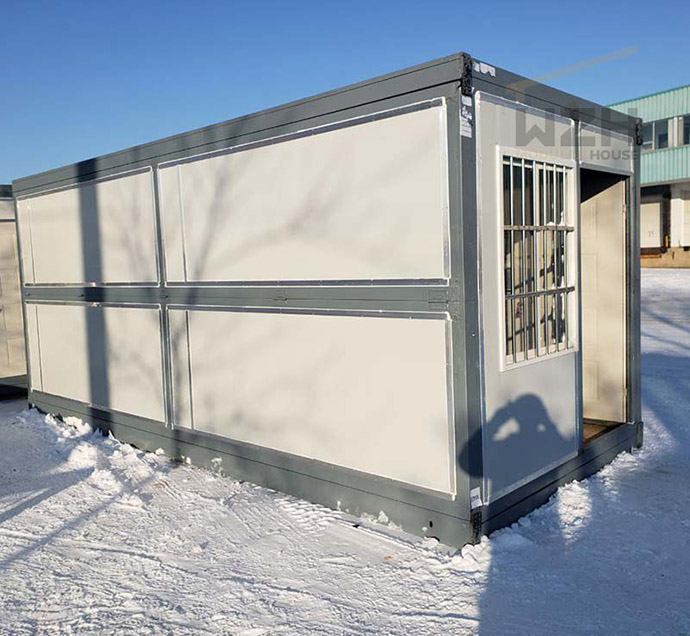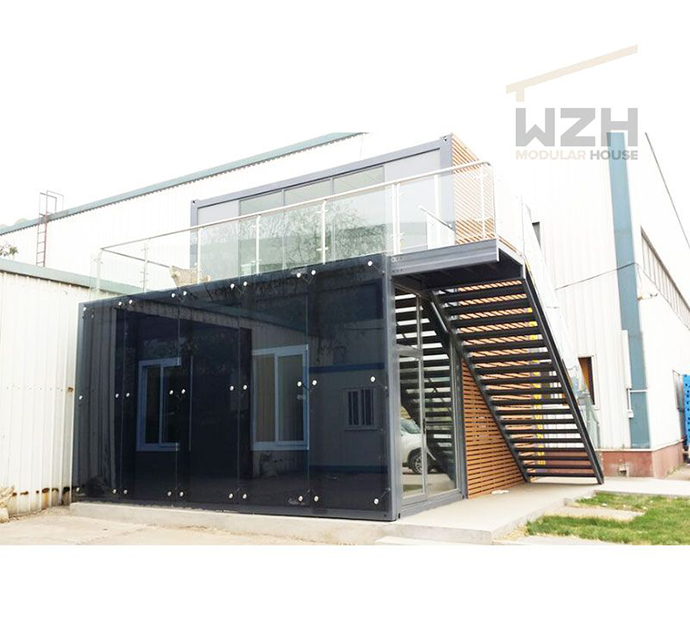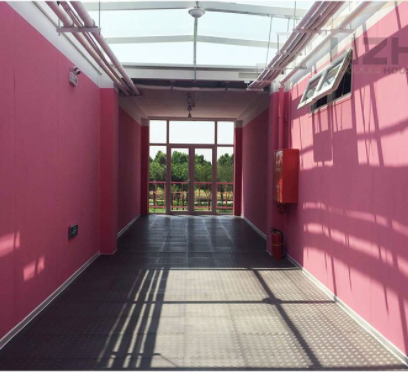Container architecture is often labeled as a green, sustainable or eco-friendly form of construction. It focuses on recycling or upgrading used containers that would otherwise be nothing more than piles of discarded steel taking up space in some ports around the world. In addition, by recycling these steel structures, the need for bricks, wood and other building materials is reduced. This subsequently reduces the total implied energy costs associated with the home.
While the use of recycled materials is a fundamental aspect of sustainable construction, there are several aspects related to container homes that need to be revisited. Container homes, like any building, need to be planned accordingly to achieve their maximum potential sustainability.
Modern Container House Australia Expandable Tiny Home With Solar System
Converting abandoned shipping containers into livable homes is certainly a useful and meaningful example of recycling. Many people worry about the condition of containers and opt for disposable containers because they are usually in tip-top shape and free of any dents or rusting issues. But using one-way containers for your home structure essentially means that you are using a lot of mined steel (a non-renewable resource). Choosing containers that have completed their useful life on a cargo ship and are sitting idle in a port or parking lot, rather than buying brand new containers, is a more sustainable way to recycle the material.
Shipping containers are designed to withstand life at sea. Since most cargo ships experience problems with rats and cockroaches, the wooden floors in containers are often heavily treated with insecticides to deter these unwanted guests. The steel walls and roofs of containers often contain paint that contains heavy metals such as phosphorus and chromates. These chemicals help protect the steel from steady sprays of salt water, which can corrode steel containers.
These volatile, gas-releasing chemicals can cause serious health risks to dock workers, customs inspectors, and others. The types of gases that accumulate in these closed containers also depend on the items being transported. However, hazardous chemicals such as formaldehyde, styrene, benzene or toluene are common.
One of the first tasks when converting a shipping container into a livable home should be to rip out the flooring that contains pesticides and take steps to cover or encapsulate the toxic paint. Using a non-toxic sealer primer will help encapsulate the chemicals and stop the exhaust of harmful volatile organic compounds.
Assume you have selected a used and well-used shipping container and have completed the removal of a potentially hazardous, toxic chemical. In this case, there are still things you can do to maximize the sustainability of your home. Steel conducts heat effectively, which means that in most climates, your container home will need to be more insulated than a traditional wood-frame or brick home.
While most contractors who specialize in container construction use spray foam insulation, almost all spray insulation is made of polyurethane, which can cause health problems, asthma, and lung problems. These sprays also typically have a high global warming potential.
One natural way to insulate a modified container house is through straw bales to the exterior of the house. Straw bale construction has been around for centuries and is a great way to reuse surplus food agriculture products that are sometimes burned or rotted. Straw bales are some of the best insulating building materials available. To add straw bales to the exterior of your home, you will need to build a small stem wall to protect the bales from ground moisture, which can lead to rot and mold problems. You will need to coat the bales with cement and lime plaster to further protect the bales from moisture buildup.
Container homes also require some roofing and roof insulation. You will likely need to add some steel nail reinforcement to the roof, but the steel itself will provide an impermeable layer or at least a roofing layer that is more waterproof than traditional 2x4s and plywood. Or add a small layer of rigid insulation that is slightly sloped to aid in water runoff. A growing medium wrapped in rebar is placed on top of the pond liner to prevent the soil on the roof from sliding off during heavy rains.
Once your growing medium is in place, you can grow flowers, turf or other types of plants (even vegetables) in your home. The thick growing medium is not only aesthetically pleasing, but it also provides a thick layer of insulation to keep your container warm.
WZH GROUP Provides various configurations of flat pack container houses. It can meet the needs of home living, Dining, offices, hotels and mobile toilets etc. It is easily and quickly to assemeble and can adapt series of climate. Click here now to purchase the one you love!
 What Is A Folding Container House?
In recent years, infrastructure construction has been continuously carried out, and various large-scale projects have been continuously carried out. These engineering projects have generated a large demand for container houses, created a large container h
What Is A Folding Container House?
In recent years, infrastructure construction has been continuously carried out, and various large-scale projects have been continuously carried out. These engineering projects have generated a large demand for container houses, created a large container h
Dec. 13
 Outstanding Advantages Of Container Houses
The house feels solid, reliable and safe, and the most important thing is calmness. Now there is a novel housing model, which is a container house known for its mobility and flexibility.
Outstanding Advantages Of Container Houses
The house feels solid, reliable and safe, and the most important thing is calmness. Now there is a novel housing model, which is a container house known for its mobility and flexibility.
Dec. 06
 7 Things You Need to Consider before Buying and Building A Container House
In theory, building a shipping container home seems very simple. There are millions of redundant shipping containers in ports around the world, and they are the perfect size for a home. Unfortunately, things are never as easy as they seem at first. When b
7 Things You Need to Consider before Buying and Building A Container House
In theory, building a shipping container home seems very simple. There are millions of redundant shipping containers in ports around the world, and they are the perfect size for a home. Unfortunately, things are never as easy as they seem at first. When b
Sep. 15

WEIZHENGHENG Modular House Technology CO.,LTD provides various configurations of Flat Pack container houses. It can meet the needs of home living.
Copyright © Hebei Weizhengheng Modular House Technology Co., Ltd. All Rights Reserved |Sitemap